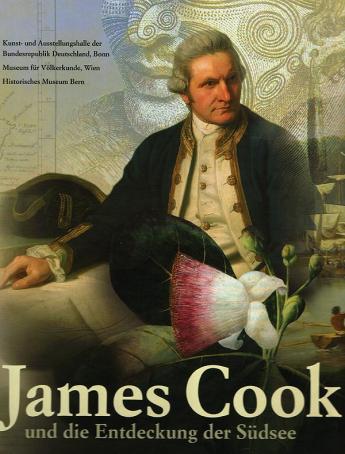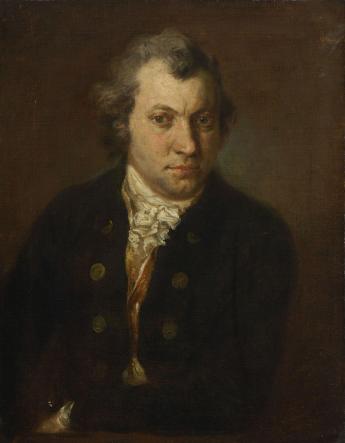James Cook and the Exploration of the Pacific

An Exhibition in Bonn (Germany), Vienna (Austria), and Berne (Switzerland)
Three expeditions into the uncharted waters of the Pacific Ocean – and a tragic end on Hawaii. James Cook (1728–1779) was the first to map New Zealand, Australia and the South Pacific islands. He formed our modern image of the world and refuted once and for all the existence of a mythical Terra Australis Incognita.
James Cook is the legendary hero of the early years of travel and exploration. His expeditions into the South Seas brought about a fundamental change in the way Europe saw the world under the auspices of the Enlightenment belief in the power of progress. It is to Cook and the naturalists and scholars who took part in his three expeditions that Europeans owe the first systematic, reliable maps, the earliest comprehensive surveys of the geological structures and the flora and fauna of the Pacific islands. And more: The encounters with the people “on the other side of the world” were described and documented as never before.
Endeavour
As recommended by the Royal Society in London, the main destination of all three expeditions was the region of the Pacific known today as Polynesia (“world of many islands”), but Cook’s voyages also took him to the Antarctic and Alaska. On his first voyage with the Endeavour (1768–1771) Cook observed the transit of Venus from Tahiti’s Matavai Bay. He then mapped New Zealand and parts of Australia with the help of the Tahitian navigator Tupaia. Sir Joseph Banks and Daniel Solander made significant scientific discoveries and were the first Europeans to see a kangaroo.
Resolution
On the second voyage with HMS Resolution (1772-1775) Cook was accompanied by two Germans: Johann Reinhold Forster and his son Georg. Having circumnavigated the globe at a high Southern latitude, Cook finally put to rest the myth of the existence of Terra Australis Incognita. They returned to Europe with a wealth of botanical and zoological objects as well as an extensive collection of curiosities.
Discovery
The third voyage (1776–1780) on HMS Discovery was made in search of the Northwest Passage. It allowed Cook to make contact with the people along the coast of North America. The artist John Webber documented the voyage in painstaking detail. It was on this last voyage that James Cook was killed on Hawaii under circumstances that have never been fully explained. They were witnessed by a young German sailor called Heinrich Zimmermann, who wrote the only existing account about what happened on the island on February 14, 1779.
By the end of the 18th century Cook’s deeds were documented in famous works written by Georg Forster, John Hawkesworth, William Ellis, James Magra or others. All the ethnographic and natural history objects collected from many different Pacific cultures during his three voyages were dispersed all over Europe. Now, a spectacular exhibition in Bonn (Bundeskunsthalle, Germany) shows more than 550 of these objects, artefacts and books, among them (as a loan from Australia) Cook’s personal property. Many of the feather ornaments or wooden sculptures are of incalculable value to art historians, because comparable objects have all but disappeared from the Pacific region. The ethnographic items are complemented by magnificent paintings and drawings by the artists accompanying Cook on his voyages. These works capture the unique mix of euphoria and inquisitiveness that characterised the explorers' encounter with the world of the South Seas. Ship models, original sea charts and navigation instruments bring to life James Cook’s daring explorations.
An exhibition about a world almost unkown today, a scholarly recount of the life of one of the most famous explorers, and an exciting insight into the ideas and achievements of the Enlightenment.
James Cook and the Exploration of the Pacific
Kunst- und Ausstellungshalle der Bundesrepublik, Bonn (Germany), until February 28, 2010
Museum für Völkerkunde, Vienna (Austria), May 10, 2010, to September 13, 2010
Historisches Museum, Berne (Switzerland), October 7, 2010, to February 13, 2011
Catalogue
James Cook und die Entdeckung der Südsee. With essays by Adrienne L. Kaeppler, Nigel Rigby, Paul Tapsell, Hans Erich Bödeker, Jeremy Coote etc. Munich, Hirmer, 2009. 276 pp. With 598 illustrations and a bibliography.
More about James Cook
Kunst- und Ausstellungshalle Bonn
James Cook Society
Hordern House at the 49th Stuttgart Antiquarian Book Fair
Book fairs, auctions, lectures and exhibitions on www.ILAB.org


